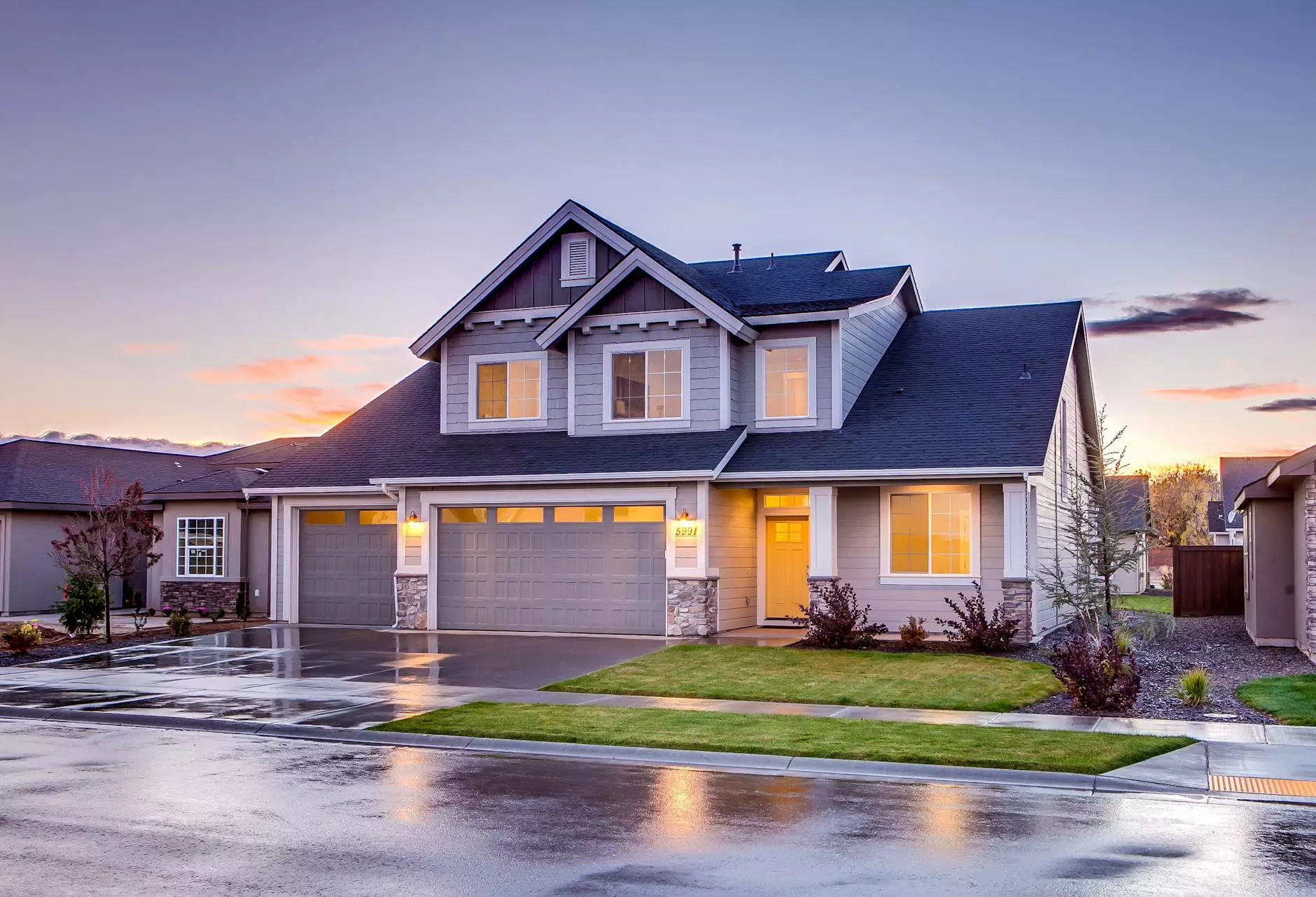The Art and Science of Model Building in Architecture

In the world of architecture, model building is not merely a skill; it is an essential avenue for bringing abstract concepts to life. The process involves transforming ideas into three-dimensional representations that communicate the architect's vision, intentions, and the stories behind buildings. This article highlights the importance of model building, its techniques, benefits, and the integral role it plays in the architectural process.
Understanding Model Building
Model building refers to the creation of physical or digital representations of a structure. These models can range from simple massing models that illustrate the volume and spatial relationships of a building to intricate architectural models that showcase every detail. Understanding the purpose and methodology behind these models is crucial for architects and designers.
The Purpose of Model Building
Architects utilize model building for various purposes, including:
- Visualization: Models provide a tangible representation of an architect's vision, making it easier to understand how spaces will look and feel.
- Communication: Models serve as effective tools for communicating ideas to clients, stakeholders, and construction teams.
- Design Exploration: Through models, architects can explore and iterate different design options before finalizing their concepts.
- Problem-Solving: Developing models helps identify potential design issues early in the process, allowing for corrections and enhancements.
Techniques in Model Building
There are various techniques that architects employ in model building, each suited to different stages of the design process and project requirements. Here are some of the most prevalent techniques used in architectural model building:
1. Physical Model Building
This traditional approach involves crafting three-dimensional physical models using materials such as wood, plastic, cardboard, and foam. Physical models can be categorized as follows:
- Massing Models: These focus on the overall form and spatial relationships without intricate details.
- Schematic Models: These provide more detail and are used for early-stage design discussions.
- Presentation Models: Highly detailed models intended for showcasing the final design to clients and stakeholders.
2. Digital Model Building
With the advancement of technology, many architects are now turning to digital tools for creating models. Software such as AutoCAD, Revit, SketchUp, and 3ds Max enables architects to build, visualize, and simulate their designs in a virtual environment. Key benefits of digital modeling include:
- Precision: Digital models allow for exact measurements and can be modified easily.
- Visualization: 3D rendering and virtual reality tools enable immersive experiences that physical models cannot offer.
- Collaboration: Digital files can be easily shared and modified by multiple team members, enhancing collaboration.
3. 3D Printing in Model Building
The rise of 3D printing technology has revolutionized the architectural model building process. This method enables architects to create highly detailed, intricate models through additive manufacturing. Benefits of 3D printing include:
- Complexity: It allows for the creation of complex geometries that would be difficult or impossible to achieve manually.
- Speed: Models can be produced much faster than traditional methods.
- Cost-Effectiveness: Minimizes waste and can be more economical for producing several iterations of a model.
The Benefits of Model Building in Architecture
Engaging in model building offers a plethora of advantages for architects, clients, and the overall architectural process. Some of the key benefits include:
Enhanced Communication
Models serve as a universal language that bridges the gap between technical professionals and laypersons. They help convey ideas in a way that drawings or descriptions may struggle to achieve. When presented with a model, clients can better grasp the design's intent, leading to informed decisions and greater satisfaction with the final product.
Improved Design Outcomes
Model building facilitates an iterative design process, where architects can visualize and assess their designs. This immediate feedback loop encourages creative exploration and leads to better overall design outcomes. By quickly identifying flaws or areas for improvement, architects can refine their concepts before they reach the construction phase.
Risk Mitigation
Early-stage models can highlight potential design risks, such as structural issues or functional inefficiencies. By addressing these concerns before construction begins, architects can significantly reduce the likelihood of costly modifications during later stages.
Inspiration and Innovation
The tangible nature of models can inspire creativity and innovation. Architects often find that interacting with a model sparks new ideas and perspectives, leading to designs that are not only functional but also aesthetically pleasing.
Case Studies: Successful Architectural Projects Utilizing Model Building
To showcase the impact of model building, let us explore a few successful architectural projects that effectively utilized modeling techniques.
Case Study 1: The High Line, New York City
The High Line is an elevated linear park built on a historic freight rail line on Manhattan’s West Side. The design team utilized both physical and digital model building techniques to explore various landscape designs. The physical models helped visualize how the park would interact with the surrounding urban context, while digital models simulated sun paths and environmental impacts. This comprehensive modeling approach contributed to the park's success as a unique urban space that promotes ecological awareness and community engagement.
Case Study 2: The Guggenheim Museum, Bilbao
Designed by Frank Gehry, the Guggenheim Museum in Bilbao, Spain, is a striking example of contemporary architecture. Gehry used physical models extensively throughout the design process to explore the complex forms and spatial relationships of the building. The final design, characterized by its flowing shapes and innovative materials, was rooted in Gehry's iterative model-building approach that emphasized experimentation and exploration of form.
Challenges in Model Building and Overcoming Them
While model building offers immense benefits, it also presents challenges. Here are some common hurdles architects face and strategies to overcome them:
1. Time Constraints
Building models can be time-consuming, and tight project schedules may discourage detailed modeling. To combat this, architects can define modeling goals early in the project and focus on critical aspects that need representation, thus streamlining the modeling process without sacrificing quality.
2. Material Limitations
The choice of materials can greatly affect the outcome of physical models. Some materials might not accurately represent the desired texture or form. By exploring advanced materials and techniques, such as CAD/CAM and 3D printing, architects can overcome these limitations and create more detailed and accurate representations of their designs.
3. Balancing Detail and Abstraction
Striking a balance between detailed representation and abstraction is crucial in model building. Architects may find themselves overwhelmed with detail, detracting from the model's purpose. Setting clear objectives for the model and employing a systematic approach will ensure that essential elements are captured while simplifying complex features.
The Future of Model Building in Architecture
The future of model building in architecture promises exciting advancements driven by technology. Innovations such as augmented reality (AR) and virtual reality (VR) are reshaping how models are perceived and utilized. These technologies allow architects to immerse stakeholders within the design environment, fostering a deeper understanding and connection to the project.
Furthermore, the integration of artificial intelligence is anticipated to streamline the design process, ensuring models can evolve dynamically as designers apply new ideas and feedback. As the architecture field continues to evolve, model building will remain a cornerstone that enables architects to manifest their visions into reality.
Conclusion
In conclusion, the significance of model building in architecture cannot be overstated. It enhances visualization, communication, and design efficacy while providing invaluable insight throughout the architectural process. By honing the skills and techniques involved in model building, architects can elevate their designs and ultimately achieve remarkable outcomes. As technology continues to advance, the evolution of modeling will only further enhance its critical role in shaping the built environment.









